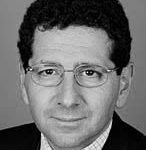Case Study:
Achilles Tendon Rupture – The Controversy
Presented by: Dr John Negrine
Achilles tendon rupture has been well described elsewhere. In brief the condition is more common in the “weekend Warrior” than in the seasoned athlete.
I was on call for the Sydney Olympics there was only one Achilles tendon rupture in all the competition. Traditionally, in Australia Achilles tendon ruptures have been managed surgically. Traditionally in Canada Achilles tendon ruptures have been managed nonsurgically.
The important point is that in a relatively young active patient treatment of the Achilles tendon rupture must be done properly. Surgical treatment requires one day in hospital two weeks nonweight bearing to allow for wound healing and four weeks in a walking boot.
The nonsurgical protocol recommended by Prof Bruce Twaddle from Auckland, an enthusiastic non-operator of Achilles tendon ruptures requires eight weeks of treatment. The first 2 to 3 weeks on nonweight bearing with gradual progression of weight bearing.
The advantage of nonsurgical treatment is obviously that the patient does not need an operation. The risks of surgery including infection and anaesthetic problems are therefore avoided. Nonsurgical treatment must however be done properly. It is not sufficient to tell a patient to go and put a boot on and go away. The boot must be on day and night in plantar flexion basically for the first four weeks with gradual resumption of neutral and gradual resumption of weight bearing.
Surgical treatment is faster in the sense that the patient can mobilise at two weeks and in my practice only requires another four weeks in the boot.
Advances in management of tendon rupture and tendon laceration indicate that movement within a certain range is beneficial to tendon healing. The benefits are thought to be due to collagen being laid down along the lines of stress, the reduction of joint stiffness, lessening of muscle wasting and theoretically a lower risk of blood clotting.
For this reason after the wound has healed Surgically I allow the patient range of motion and weight bearing gradually reaching neutral by six weeks.
What we are trying to achieve with nonsurgical and surgical treatment is healing of the Achilles tendon without significant lengthening of the tendon. Lengthening of the tendon is detrimental as the patient will suffer loss of push off strength. This is particularly an issue in an athlete and may explain why following treatment either surgical or nonsurgical a percentage of patients do not return to their previous level of activity.
Naturally if the patient experiences a wound complication with surgical treatment the results can be devastating. The Achilles region is not an area of great blood supply and if a wound problem occurs and is significant it may require reconstructive surgery with a suboptimal result.
Nonetheless I believe as do many of my foot and ankle colleagues that surgical treatment results in a faster stronger tendon with an earlier return to activity and an earlier return to sport.
The operation is not pretty (it is like trying to sew the two ends of a hairy mop together).
Click Here to view Dr Negrine’s video on boot adjustment for an achilles tendon rupture



